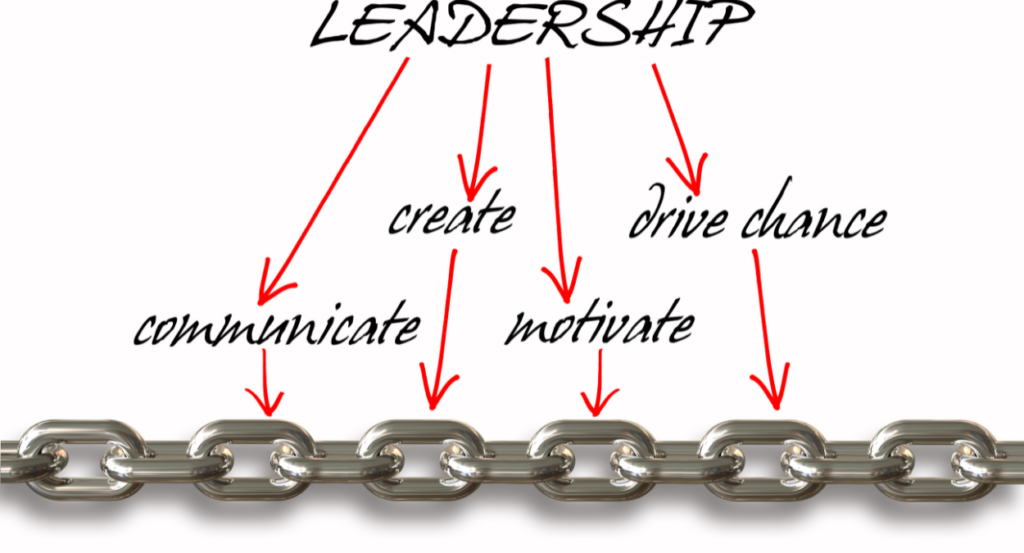How to Build a Passionate Performance-Based Culture?
In today’s rapidly changing business landscape, organizations are constantly seeking ways to stay competitive and achieve sustained success. One key strategy is to cultivate a passionate performance-based culture within the workplace. Such a culture not only boosts employee morale but also drives productivity and innovation. In this comprehensive guide, we’ll explore the steps and strategies to build a passionate performance-based culture that can elevate your organization to new heights.

Introduction
Building a passionate performance-based culture is a journey that starts with understanding the significance of culture within an organization. It’s not just about the work; it’s about the way work is done, the values that guide it, and the enthusiasm with which employees contribute to the organization’s mission.
Understanding the Importance of Culture
Why Culture Matters?
A passionate culture fosters a sense of belonging, making employees more invested in their work and the company’s success. It leads to higher retention rates and greater employee engagement.
The Link Between Culture and Performance
A strong culture aligns employees with organizational goals, which, in turn, boosts individual and collective performance.
Setting Clear Expectations
Defining Performance Expectations
Clearly defined expectations provide a roadmap for employees to follow. It’s the foundation for any performance-based culture.
Communicating Expectations Effectively
Effective communication ensures that employees understand their roles, responsibilities, and the organization’s vision.

Leadership and Role Modeling
The Role of Leadership
Leaders play a pivotal role in shaping culture. They set the tone for the entire organization.
Leading by Example
Leaders should model the values, behaviors, and work ethic they expect from their teams.
Recognition and Rewards
Recognizing and Appreciating Achievements
Regular recognition of employee efforts and achievements reinforces a culture of excellence.
Tailoring Rewards to Motivate
Tailored rewards, be it monetary or non-monetary, can motivate employees to perform at their best.
Training and Development
Continuous Learning and Skill Enhancement
Continuous learning and development opportunities keep employees engaged and equipped to excel in their roles.
Empowering Employees with Knowledge
Informed and skilled employees contribute more effectively to the organization’s goals.
Feedback and Communication
Constructive Feedback
Regular, constructive feedback helps employees understand where they stand and how they can improve.
Open and Transparent Communication
A culture of open communication ensures that employees feel heard and valued.
Performance Metrics and Evaluation
Establishing Key Performance Indicators (KPIs)
Clear KPIs provide a measurable way to track individual and collective performance.
Regular Performance Evaluation
Regular evaluations help employees understand their progress and areas for improvement.
Employee Involvement and Ownership
Encouraging Employee Involvement
Involving employees in decision-making and problem-solving fosters a sense of ownership.
Fostering a Sense of Ownership
Ownership instills a commitment to the organization’s goals and encourages innovative thinking.
Embracing Innovation and Creativity
The Role of Creativity in Performance
Encouraging creativity leads to innovative solutions and a dynamic, high-performance culture.
Cultivating a Culture of Innovation
Creating an environment where employees feel free to explore and innovate is crucial.
Balancing Work-Life Integration
Promoting Work-Life Balance
A balanced life enhances well-being and overall performance.
Employee Well-being
Prioritizing employee well-being creates a healthier and happier workforce.
Challenges and Pitfalls
Common Challenges in Building Performance-Based Cultures
Recognizing and addressing potential roadblocks is essential for success.
How to Overcome Them?
Strategies to overcome challenges and maintain a passionate performance-based culture.
Success Stories
Explore real-world examples of organizations that have successfully cultivated passionate performance-based cultures.

Addressing Common Challenges in Building a Performance-Based Culture
Building a passionate performance-based culture is a transformative journey, but it’s not without its challenges. Recognizing and addressing these obstacles is crucial to ensure the culture’s success. Let’s explore some of the common challenges and strategies to overcome them:
Resistance to Change
Challenge: Employees may resist change, especially when transitioning to a new culture that emphasizes performance.
Solution: Communication is key. Clearly articulate the reasons for the change, its benefits, and involve employees in the process to reduce resistance.
Lack of Clear Expectations
Challenge: Without clear expectations, employees may struggle to understand their roles and responsibilities.
Solution: Define expectations through written job descriptions, regular one-on-one discussions, and performance goals. Provide examples to illustrate expectations.
Inadequate Communication
Challenge: Poor communication can lead to misunderstandings and disengagement.
Solution: Foster open and transparent communication channels. Regularly solicit feedback, address concerns, and celebrate achievements together.
Overemphasis on Metrics
Challenge: Over-reliance on performance metrics can create a stressful work environment.
Solution: Balance metrics with qualitative evaluations and consider the holistic impact of individual and team performance.
Lack of Employee Involvement
Challenge: Employees may disengage if they feel excluded from decision-making and problem-solving.
Solution: Involve employees in discussions and encourage them to provide input, fostering a sense of ownership.
Inadequate Recognition
Challenge: Failing to recognize and appreciate employee achievements can lead to demotivation.
Solution: Implement a regular recognition and rewards system to acknowledge and appreciate employees’ hard work.
Unrealistic Performance Expectations
Challenge: Setting unattainable performance targets can lead to burnout and decreased morale.
Solution: Ensure that performance expectations are realistic and achievable, and adjust them as needed based on employee feedback and evolving business needs.
Lack of Leadership Buy-In
Challenge: If leaders do not embrace and model the desired culture, it’s challenging to build it at all levels.
Solution: Train and educate leaders on the benefits of the culture and the importance of their role in championing it.
Employee Burnout
Challenge: The pursuit of high performance can lead to burnout if work-life balance is not prioritized.
Solution: Encourage work-life integration and support employee well-being through flexible policies and stress-reduction initiatives.
Resistance to Feedback
Challenge: Some employees may be resistant to feedback and constructive criticism.
Solution: Create a culture that values feedback as an opportunity for growth and improvement. Train employees to receive and provide feedback effectively.
By recognizing these challenges and implementing the corresponding solutions, you can navigate the path to building a passionate performance-based culture more effectively. Success in overcoming these obstacles will lead to a workplace where employees are motivated, engaged, and dedicated to achieving both individual and organizational success.
The Critical Role of Leadership in Nurturing a Passionate Culture
Leadership is the cornerstone of any passionate performance-based culture. Leaders play a pivotal role in shaping the workplace environment, setting the tone for the entire organization, and inspiring employees to give their best. Here’s a closer look at the key responsibilities and attributes that leaders must embody to create and sustain such a culture:
Visionary Leadership
Leaders must have a clear and compelling vision for the organization. This vision serves as a guiding light, aligning employees with a common purpose and motivating them to contribute to the organization’s success.
Lead by Example
Effective leaders lead by example. They demonstrate the behaviors, work ethic, and values they expect from their teams. By embodying the desired culture, they inspire employees to do the same.
Empower and Delegate
Leaders empower employees by entrusting them with responsibilities and decision-making authority. This not only builds trust but also encourages employees to take ownership of their work.
Support and Develop
Great leaders support employees’ growth and development. They provide resources, training, and mentorship opportunities to help employees excel in their roles and advance their careers.
Communicate Effectively
Open and transparent communication is paramount. Leaders should foster an environment where employees feel comfortable sharing ideas, concerns, and feedback.
Recognize and Appreciate
Recognizing and appreciating employees’ efforts and achievements is a fundamental leadership responsibility. Regular praise and rewards reinforce the culture of excellence.
Foster a Collaborative Environment
Leaders should promote collaboration and teamwork. Encouraging employees to work together enhances problem-solving and innovation.
Adapt to Change
In a rapidly evolving business landscape, leaders must be adaptable and open to change. They should guide the organization through transformations while maintaining the core values of the culture.
Prioritize Employee Well-being
Leaders are responsible for prioritizing the well-being of their employees. Encouraging a healthy work-life balance, providing stress-reduction initiatives, and supporting employee wellness are essential.
Accountability
Leaders must hold themselves and their teams accountable for achieving performance goals. This accountability ensures that everyone is committed to the organization’s success.
In summary, leaders are the architects of a passionate performance-based culture. They create an environment where employees are motivated, engaged, and dedicated to achieving both individual and organizational success. By demonstrating visionary leadership, leading by example, and nurturing their teams, leaders can shape a workplace that thrives on excellence and passion.
Conclusion
Building a passionate performance-based culture requires dedication and commitment. However, the rewards, such as increased productivity, higher employee satisfaction, and better business outcomes, are worth the effort.
Frequently Asked Questions (FAQs)
1. What is a performance-based culture?
A performance-based culture is one where employees are motivated to excel and contribute to an organization’s success through their performance and dedication.
2. How can leaders encourage a passionate culture?
Leaders can encourage passion by modeling the desired behavior, recognizing achievements, and providing opportunities for growth.
3. Why is innovation important in a performance-based culture?
Innovation fosters creativity and problem-solving, which can lead to improved performance and a competitive edge.
4. What are some common challenges in building a performance-based culture?
Common challenges include resistance to change, lack of clear expectations, and inadequate communication.
5. How can organizations measure the success of their performance-based culture?
Success can be measured through key performance indicators (KPIs), employee feedback, and business outcomes.
Building a passionate performance-based culture is a journey that can transform your organization into a thriving, high-performing powerhouse. Start today, and reap the rewards of a motivated and engaged workforce.
6. How can organizations sustain a passionate performance-based culture over time?
Sustaining such a culture involves continuous efforts in leadership, communication, recognition, and adaptation to changing circumstances.
7. Are there any industries where a performance-based culture is particularly beneficial?
A performance-based culture can be beneficial in any industry, but it is often highly valued in sales, customer service, and technology-driven sectors.
8. What role does employee feedback play in building a passionate performance-based culture?
Employee feedback is invaluable for assessing the effectiveness of the culture and making necessary improvements. It also empowers employees to voice their concerns and suggestions.
9. How can organizations handle underperforming employees within a performance-based culture?
It’s important to address underperformance promptly and constructively, providing support, training, and opportunities for improvement. In some cases, restructuring roles or seeking alternative solutions may be necessary.
10. Can a performance-based culture coexist with work-life balance?
Absolutely. Balancing work-life integration is a key component of a successful performance-based culture, as it promotes well-being and prevents burnout.
Building a passionate performance-based culture requires ongoing commitment and a dedication to fostering an environment where employees can thrive. By following the steps outlined in this guide, your organization can achieve higher productivity, greater employee satisfaction, and sustained success.
https://optimalhealth.in/junoonee-pradarshan-aadhaarit-sanskrti/
https://onwebstory.com/how-to-defeat-fear-worry-and-depression-permanently/
